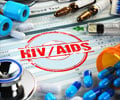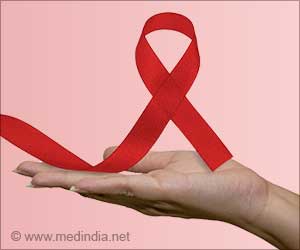Abandoned in a bar as a baby and given just weeks to live by doctors seven years later, Tommy Jarvis is living proof AIDS is no longer an automatic death sentence for youngsters in
Abandoned in a bar as a baby and given just weeks to live by doctors seven years later, Tommy Jarvis is living proof AIDS is no longer an automatic death sentence for youngsters in South Africa. Tommy, now a strapping 13-year-old who spends his spare time riding his bike and practicing karate, makes light of the day that medics gave up on him. "They said I would be dead in three weeks but look at me now," says the still slightly incredulous teenager who now wants to serve as an inspiration to youngsters with a similar story.
Thea Jarvis, who adopted Tommy after his birth mother abandoned him in a township drinking hole when he was one-year-old, recalls how the family became aware of his HIV-positive status when he later contracted pneumonia. Although AIDS-fighting anti-retroviral drugs (ARVs) had come on the market, they were prohibitively expensive and she was faced with a dreadful dilemma."I had four children who were HIV positive and couldn't afford to put them all on ARVs," Jarvis told AFP at her sprawling family home on the outskirts of Johannesburg where she and an army of assistants care for more than 70 abandoned babies. It was not until Tommy, then aged eight, was "on his deathbed" that she managed to scrape together the money to put him and the other children on a course of ARVs which have given them all a new lease of life.
Tommy was one of the stars of the show at last week's national AIDS conference in Durban where he addressed delegates about his life and how he hopes to help others replicate his stirring story. "I want to look after albino babies that can't be looked after by their mums and dads," he said alongside his visibly proud adoptive mother. The arrival on the market of more affordable ARVs has helped reduce the mortality rate among HIV-positive youngsters as has a shift in government priorities, with the recent five-year AIDS programme specifically pledging to address the plight of vulnerable children.
The scale of the problem remains daunting however with the Medical Research Council estimating that some 45,000 children under 15 died due to AIDS in 2006. According to Farai Dube of Johannesburg's Wits Paediatric HIV clinics, the change of attitude from the government is to be welcomed but only goes so far. "No one was concentrating on children. There were very few advocacy groups and very few clinics taking responsibility of putting children on treatment. Only now are people beginning to analyse the children," he said.
But, as Dube pointed out, only 27,000 of the 123,000 HIV-infected children who are considered sick enough to require ARVs actually receive them. Glenda Gray, director of the Johannesburg-based Perinatal HIV Research Unit, said drug firms had not prioritised treatment for children as rates of mother to child transmissions were much lower in the developed world than Africa.
"Paediatric formulations are not a big priority for big pharma. You don't make lots of money from children," Gray told AFP. "It's an ongoing battle, the pressure for paediatric formulations is still required. Sometimes the medicine tastes terrible and you have to get your toddler to drink disgusting medicine." The first person who really opened the world's eyes to the plight of Africa's young AIDS victims was 11-year-old Nkosi Johnson who delivered an electrifying speech at the 2000 international AIDS conference in Durban.
"But he would definitely, knowing him, be disappointed there are not as many as there should be," she told AFP. Even when children manage to access ART, some have nobody to make sure they take them correctly, as their parents die or are too sick to care for them. Those HIV sufferers who do survive beyond childhood often face huge challenges that their friends can only imagine, including how to develop relationships and have healthy children themselves. Another face to the children's crisis also remains -- the estimated 11 million children in sub-Saharan Africa who have lost one or both parents to the disease and are often left to fend for themselves.
Source-AFP
LIN/S










